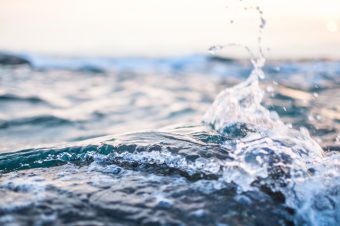
Fifty-nine (59) percent of environment-related indicators for the Sustainable Development Goals (SDG) now have sufficient data to analyse progress, up from 34 percent in 2018. A report released today by the UN Environment Programme (UNEP), focusing on freshwater ecosystems, finds that while the world is not on track to achieve the environmental dimension of the SDGs, there is some positive movement towards reaching these goals.
The report, Measuring Progress: Water-related ecosystems and the SDGs, calls on governments to further strengthen their statistical capacity in relation to the environment and to promote the use of non-traditional data sources – such as big data and citizen science – to fill the data gap. It is published one week ahead of the UN 2023 Water Conference and in view of the September SDG Summit in New York, marking the mid-point of implementing the 17 SGDs of the 2030 Agenda agreed in 2015.
The UN 2023 Water Conference is calling for bold commitments to be made to accelerating progress on SDG 6 and other water-related SDGs, including increased access to data and information, and increased use of economic and environmental accounting (SEEA) to advance the financing and protection of wetlands and other water bodies, factoring them into financial and other national accounts. These all require more and better data from global to local levels.
The latest available data for the 92 environment-related SDG indicators tell us that the world is not on track to achieve the environmental dimension of the SDGs by 2030. However, 38 percent of the 92 indicators signal environmental improvement – a solid improvement compared to only 28 percent in 2020. At the same time, 21 percent of indicators saw negative or no change, and 41 percent lack data.
“Seven years – that’s all the time we have to transform our world by protecting and expanding our water resources, securing clean water and sanitation, healthy water ecosystems, and all other development goals,” said Dr. Jian Liu, Director of the UNEP’s Early Warning and Assessment Division.
“Global data availability rose to 59 percent in 2022 from 34 percent in 2018 and 42 percent in 2020. While only 38 percent of environment-related indicators show improvement, it’s a significant increase from 28 percent in 2020,” he added. “However, it’s important to note that these positive trends are far from enough to realize the SDGs related to the environment by 2030. Therefore, countries must increase investment in data availability, so decisions are not taken in the dark and policymaking is not left to chance.”

Water is central to the achievement of all 17 SDGs, and data is key to making sound policy decisions; meeting the goals will require an integrated approach that recognizes how these challenges — and their solutions — are interrelated. The report calls for an all-sector approach, which would also allow a more holistic realization of the 2030 Agenda.
Integrated policies such as integrated water resources management, which are based on the interlinked nature of land and water-based ecosystems, should be prioritized over narrow policies that treat water issues in silo. This would allow for suitable water infrastructure in urban areas, provide mitigation of air, water and soil pollution, protect biodiversity and food security, and the raw materials that fuel economic growth.
The SDG framework has a total of 17 goals, 169 targets and 231 unique indicators— 92 of these are environment related. While 59 percent of these indicators possessed data in 2022, there is a need to improve our use of non-traditional data, whether through innovative use of big data, earth observations and satellite data to close the gap and support the development of informed policy making to protect our planet.
The report also represents one of the first attempts to use multivariate statistical analysis to explore how ecosystems are impacted by environmental changes and policy at multiple scales. As such, this work represents a crucial step forward in using analytical methods to explore well-known and lesser-known interlinkages between freshwater and marine-related ecosystems indicators and other environmental, social, and economic factors. This demonstrates the need for more innovative approaches to developing global data sets and to refining global water indicators.
Source: UNEP



